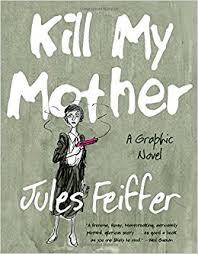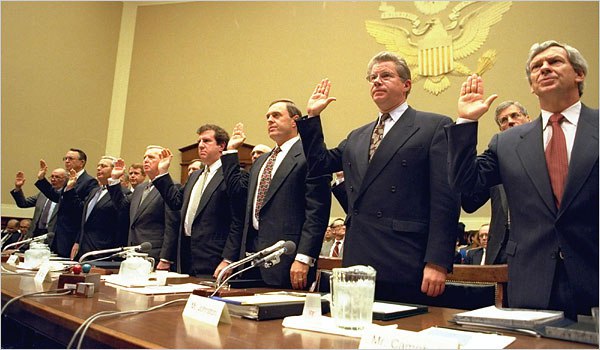This week’s Five Star Friday recommendation, Cousin Joseph by dramatist and satirist Jules Feiffer is an irresistible treat to read and a reason you should check out the graphic novel genre if you aren’t yet a fan.
Publisher’s Summary: Meet Big Sam Hannigan. Tough, righteous, a man on a mission. Only problem is, it’s the wrong mission.
With the New York Times bestseller Kill My Mother, legendary cartoonist Jules Feiffer began an epic saga of American noir fiction. With Cousin Joseph, a prequel that introduces us to bare-knuckled Detective Sam Hannigan, head of the Bay City’s Red Squad and patriarch of the Hannigan family featured in Kill My Mother, Feiffer brings us the second installment in this highly anticipated graphic trilogy.
Our story opens in Bay City in 1931 in the midst of the Great Depression. Big Sam sees himself as a righteous, truth-seeking patriot, defending the American way, as his Irish immigrant father would have wanted, against a rising tide of left-wing unionism, strikes, and disruption that plague his home town. At the same time he makes monthly, secret overnight trips on behalf of Cousin Joseph, a mysterious man on the phone he has never laid eyes on, to pay off Hollywood producers to ensure that they will film only upbeat films that idealize a mythic America: no warts, no injustice uncorrected, only happy endings.
But Sam, himself, is not in for a happy ending, as step by step the secret of his unseen mentor’s duplicity is revealed to him. Fast-moving action, violence, and murder in the noir style of pulps and forties films are melded in the satiric, sociopolitical Feifferian style to dig up the buried fearmongering of the past and expose how closely it matches the headlines, happenings, and violence of today.
With Cousin Joseph, Feiffer builds on his late-life conversion to cinematic noir, bowing, as ever, to youthful heroes Will Eisner and Milton Caniff, but ultimately creating a masterpiece that through his unique perspective and comic-strip noir style illuminates the very origins of Hollywood and its role in creating the bipolar nation we’ve become.
It’s not just that Cousin Joseph is a top-notch graphic novel, it is also proof that creative success is possible even if you’re in your 80’s.
If you don’t recognize the author’s name, you may recognize the many titles he wrote for children including : Rupert Can Dance, A Room With a Zoo, The Man in the Ceiling, and the books he illustrated such as the famous The Phantom Tollbooth. There are also the plays Little Murders, Carnal Knowledge and The White House Murder Case.
No doubt, Cousin Joseph is for grown-ups who appreciate a hard-boiled detective tale. The story, pulp yes, is smart and interwoven with themes that are as relevant now as they were in the ’30’s : anti-immigration, union busting, Red baiting and dirty cops. However, it’s the artwork that also elevates the work to literature.
Gary Katz of the Jewish Book Council wrote, “The artwork in Cousin Joseph is filled with constant frantic motion, colored in the classic film noir lighting style, awash of grays, greens, and faded browns. Feiffer has constructed a terrific visual story that feels like it comes directly from the pages of Raymond Chandler or Dashiell Hammett.”
Throughout his career, Feiffer never shied away from difficult topics. As Library of Congress curator of Popular and Applied Graphic Art in the Prints and Photographs Division, Harry Katz, wrote in the 1996 “Library of Congress Information Bulletin”
His “graphic ruminations on civil rights, relations between the sexes, poverty, the peace movement, the generation gap and the Vietnam War struck a responsive chord. He was prolific, producing numerous cartoon compilations, including Feiffer’s Album, Feiffer on Civil Rights and Feiffer’s Marriage Manual. Over time, he continued to refine his drawing techniques, consciously developing a repertoire of styles that complemented his cartoon text; spare, simple images unfold frame by frame and entice the eye without distracting the mind from his potent message.
Oh yeah, he won a Pulitzer Prize for Editorial Cartooning in 1986. In an NPR interview with Robert Siegel, Feiffer said, “Well, I’ve had endless acts because I ran out of steam on one thing, because life happened on another thing, and I developed a resourcefulness … where I would just look around for some other way to do what I wanted to do.” Feiffer said, if success comes too quickly “you don’t build these, what I used to call these ‘rejection deltoids,’ where you are so used to being hit in the face that you just get up again automatically.”
Feiffer said that he apprenticed with one of the best cartoonists of the Depression era, Will Eisner, “I understood the form. But I couldn’t do the drawings. No matter how hard I tried, it was pitiful. It took me until age 80 to perfect a style that worked in that kind of genre. And I amazed myself! I thought, when I wrote this story, somebody else would have to illustrate it. The publisher tells me to try it, and so I try—and by God, things began to click!”
So, it’s your turn: How can you strengthen your ‘rejection deltoids?’ Where will your 4th, 5th, or 6th act take you creatively?
For inspiration, pick up Cousin Joseph.
Happy Reading, Susan C.
Also by Feiffer:
 Kill My Mother – As our story begins, we meet Annie Hannigan, an out-of-control teenager, jitterbugging in the 1930s. Annie dreams of offing her mother, Elsie, whom she blames for abandoning her for a job soon after her husband, a cop, is shot and killed. Now, employed by her husband’s best friend—an over-the-hill and perpetually soused private eye—Elsie finds herself covering up his missteps as she is drawn into a case of a mysterious client, who leads her into a decade-long drama of deception and dual identities sprawling from the Depression era to World War II Hollywood and the jungles of the South Pacific.
Kill My Mother – As our story begins, we meet Annie Hannigan, an out-of-control teenager, jitterbugging in the 1930s. Annie dreams of offing her mother, Elsie, whom she blames for abandoning her for a job soon after her husband, a cop, is shot and killed. Now, employed by her husband’s best friend—an over-the-hill and perpetually soused private eye—Elsie finds herself covering up his missteps as she is drawn into a case of a mysterious client, who leads her into a decade-long drama of deception and dual identities sprawling from the Depression era to World War II Hollywood and the jungles of the South Pacific.
Along with three femme fatales, an obsessed daughter, and a loner heroine, Kill My Mother features a fighter turned tap dancer, a small-time thug who dreams of being a hit man, a name-dropping cab driver, a communist liquor store owner, and a hunky movie star with a mind-boggling secret. Culminating in a U.S.O. tour on a war-torn Pacific island, this disparate band of old enemies congregate to settle scores.
In a drawing style derived from Steve Canyon and The Spirit, Feiffer combines his long-honed skills as cartoonist, playwright, and screenwriter to draw us into this seductively menacing world where streets are black with soot and rain, and base motives and betrayal are served on the rocks in bars unsafe to enter. Bluesy, fast-moving, and funny, Kill My Mother is a trip to Hammett-Chandler-Cain Land: a noir-graphic novel like the movies they don’t make anymore.
 Backing into Forward: A Memoir – The award-winning cartoonist, playwright, and author delivers a witty, illustrated rendition of his life, from his childhood as a wimpy kid in the Bronx to his legendary career in the arts.
Backing into Forward: A Memoir – The award-winning cartoonist, playwright, and author delivers a witty, illustrated rendition of his life, from his childhood as a wimpy kid in the Bronx to his legendary career in the arts.
A gifted storyteller who has delighted readers and theater audiences for decades, Jules Feiffer now turns his talents to the tale of his own life.
Plagued by learning problems, a controlling mother, and a debilitating sense of fear, Feiffer embarked on his first cartoon apprenticeship at the age of seventeen, emboldened only by a passion for success and an aptitude for failure. He vividly recalls those transformative years working under the legendary Will Eisner, and later, after he was drafted into the army, his evolution from “smart-ass kid into an enraged satirist.” Backing into Forward also traces Feiffer’s love life, from a doomed hitchhiking trip to reclaim his high-school sweetheart to losing his virginity in Greenwich Village, and his road to marriage and fatherhood.
At the center of this journey is Feiffer’s prolific creativity. In dazzling detail, he recounts the birth of his subversive graphic novella Munro, his entrée into New York’s literary salons, collaborations with film greats Mike Nichols, Robert Altman, and Jack Nicholson, and other major turning points. Brimming with wry punch lines, slices of Americana, and pithy social commentary, Backing into Forward charts Feiffer’s rise as an unlikely and incisive provocateur during the conformist fifties and the Vietnam and Civil Rights sixties and seventies.
Share this:





